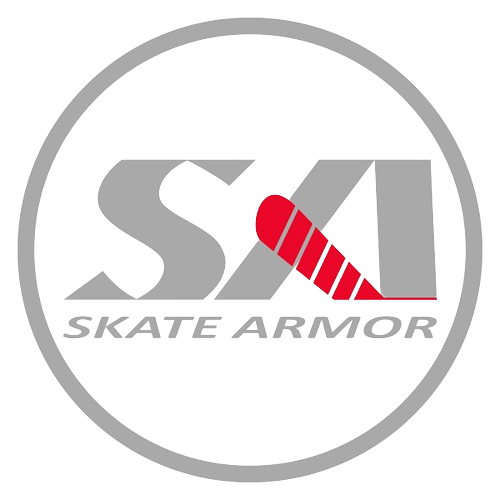USA HOCKEY/MAYO-CLINIC
Clinical Journal of Sport Medicine: Post Author Corrections: June 19, 2014 doi: 10.1097/JSM.0000000000000121 Original Research: PDF Only
The Most Cut-Resistant Neck Guard for Preventing Lacerations to the Neck.
Loyd, Andre M. PhD; Berglund, Lawrence BSc; Twardowski, Casey P. BA; Stuart, Michael B. BA; Smith, Aynsley M. RN, PhD; Gaz, Daniel V. MSc; Krause, David A. PT, DSc; An, Kai-Nan PhD; Stuart, Michael J. MD
Published Ahead-of-Print
Abstract Objective: To evaluate the effectiveness of a variety of neck guard brands when contacted by a sharpened hockey skate blade.
Design: Analytic experimental.
Setting: Laboratory.
Participants: Neck surrogate.
Interventions: Forty-six samples of 14 different types of neck guards were tested on a custom-made laceration machine using a neck surrogate. Closed-cell polyethylene foam was placed between the neck surrogate and the protective device.
Main Outcome Measures: The effectiveness of the neck guard was evaluated by observation of the foam after the simulated slicing action of the skate blade. Two sets of tests were performed on each device sample including low and high force. For low-force tests, initial compression loads of 100, 200, and 300 N were applied between the neck surrogate for each of 2 orientations of the blade at 45 and 90 degrees. For high-force tests, representing a more severe simulation, the applied load was increased to 600 N and a blade angle fixed at 45 degrees. All tests were performed at a blade speed of 5 m/s.
Results: Only 1 product, the Bauer N7 Nectech, failed during the 300-N compression tests. All of the neck guards failed during 600-N test condition except for the Skate Armor device and 1 of the 3 Reebok 11K devices.
Conclusions: A skate blade angle of 45 degrees increased the likelihood of a neck laceration compared with a skate blade angle of 90 degrees due to decreased contact area. Damage to the neck guard is not an indicator of the cut resistance of a neck guard. Neck protectors with Spectra fibers were the most cut resistant.
Clinical Relevance: The study provides data for the selection of neck guards and neck guard materials that can reduce lacerations to the neck.
Copyright (C) 2015 Wolters Kluwer Health, Inc. All rights reserved.
Clin J Sport Med. 2014 Jun 19. [Epub ahead of print]
The Most Cut-Resistant Neck Guard for Preventing Lacerations to the Neck.
Loyd AM1, Berglund L, Twardowski CP, Stuart MB, Smith AM, Gaz DV, Krause DA, An KN, Stuart MJ.
Author information
1*Orthopedic Biomechanics Laboratory, Mayo Clinic, Rochester, Minnesota; †Department of Orthopedic Surgery, Mayo Clinic, Rochester, Minnesota; ‡Sports Medicine Center, Mayo Clinic, Rochester, Minnesota; and §Department of Physical Medicine and Rehabilitation, Mayo Clinic, Rochester, Minnesota.
Abstract
OBJECTIVE: To evaluate the effectiveness of a variety of neck guard brands when contacted by a sharpened hockey skate blade.
DESIGN: Analytic experimental.
SETTING: Laboratory.
PARTICIPANTS: Neck surrogate.
INTERVENTIONS: Forty-six samples of 14 different types of neck guards were tested on a custom-made laceration machine using a neck surrogate. Closed-cell polyethylene foam was placed between the neck surrogate and the protective device.
MAIN OUTCOME MEASURES: The effectiveness of the neck guard was evaluated by observation of the foam after the simulated slicing action of the skate blade. Two sets of tests were performed on each device sample including low and high force. For low-force tests, initial compression loads of 100, 200, and 300 N were applied between the neck surrogate for each of 2 orientations of the blade at 45 and 90 degrees. For high-force tests, representing a more severe simulation, the applied load was increased to 600 N and a blade angle fixed at 45 degrees. All tests were performed at a blade speed of 5 m/s.
RESULTS: Only 1 product, the Bauer N7 Nectech, failed during the 300-N compression tests. All of the neck guards failed during 600-N test condition except for the Skate Armor device and 1 of the 3 Reebok 11K devices.
CONCLUSIONS: A skate blade angle of 45 degrees increased the likelihood of a neck laceration compared with a skate blade angle of 90 degrees due to decreased contact area. Damage to the neck guard is not an indicator of the cut resistance of a neck guard. Neck protectors with Spectra fibers were the most cut resistant.
CLINICAL RELEVANCE: The study provides data for the selection of neck guards and neck guard materials that can reduce lacerations to the neck
Click here to download article
